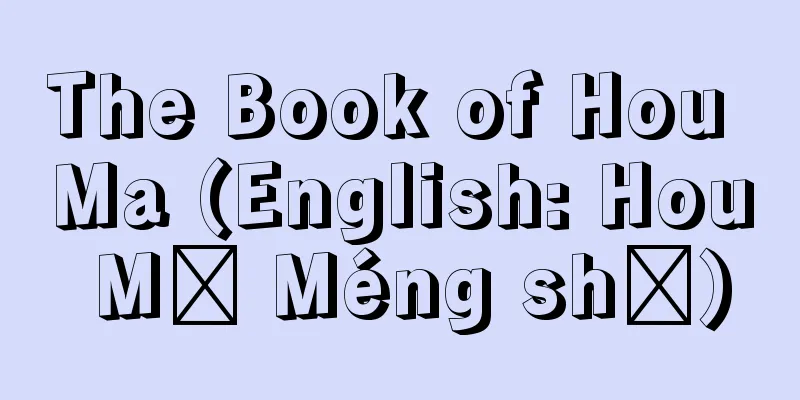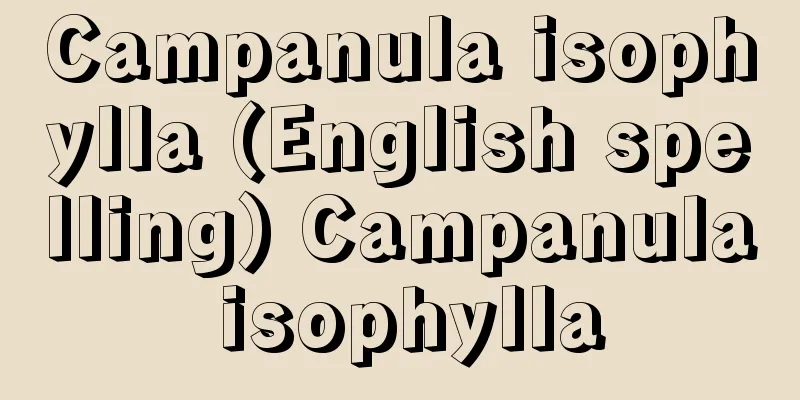Ash - Yes (English spelling)

|
It is the powder that remains when a substance is burned, and is usually gray in color. The water-soluble component of ash from burning land plants is mainly potassium carbonate, and from marine plants it is sodium carbonate. Therefore, the ash of land plants is used as potassium fertilizer. This is why ash from burning straw in fields has been used since ancient times, including slash-and-burn agriculture, and continues to be used today. Wood ash is composed of about 30% carbon, 30 % silica (SiO2), about 5% alumina ( Al2O3 ), about 2% potassium ( K2O ), about 5% calcium (CaO), and about 3% phosphoric acid ( P2O5 ) , as well as magnesium, iron, sodium, and manganese (the composition of these varies considerably depending on the type of wood). Briquettes and coal contain mineral components in addition to plant decomposition products, so the ash obtained by burning them is not suitable as fertilizer. The clear liquid obtained by soaking plant ash in water is called lye, and is an alkali that has been used since ancient times. [Nakahara Katsunori] FolkloreIn Japan, ash is used to remove bitterness from foods such as hemp and other fibers and horse chestnuts, but it is often used as fertilizer. Ash is almost the only potassium fertilizer that farmers can produce themselves, and is mainly used for field crops (fixed fields). In many places, ash is mixed with manure, compost, and other materials as base fertilizer, top dressing, or seeding, and then seeds are mixed in. In paddy rice cultivation, it is used as base fertilizer for seedbeds and paddy fields, and to promote snow melting. In the record, the reverse document of the 4th year of the Daiji era (1129) in the "Eishoki" states, "According to the law of this area, after Gensan, it was customary to collect firewood and make ash, and to put it in the fields as fertilizer for offering," which shows that shrub ash was used as fertilizer at the end of the Heian period. However, it is thought that ash was used as fertilizer even before that. Ash was originally used as fertilizer, but later straw ash and rice bran ash were also used. Farmers built huts called ash huts, ash stores, or burnt earth huts separate from the main house to store ash. These huts can be seen all over the country, and were used to store ashes from the family hearth, as well as ash made by burning mountain grass, bamboo, and garbage. Ash was also widely used for growing sweet potatoes, so an ash market was set up in Kawagoe, Saitama Prefecture, and there were ash wholesalers in the surrounding area, where ash was also bought and sold. The Morisada Manko, written at the end of the Edo period, states that ash buyers would collect ash from townspeople in Kyoto, Osaka, and Edo. The fertilizer value of ash varies depending on the land - wood ash, straw ash, completely burnt white ash, or unburnt black ash are best. Ashes were used as fertilizer and also for fortune telling and curses. The Yakumo Misho (around 1221) contains an account of divination using ash, although the details are unclear, and in the Tohoku and Chubu regions there is a custom called Juniyaki, in which 12 embers made from boiled porridge for the Little New Year are lined up and the weather for the year is predicted based on how they go out and the condition of the ashes. A similar charcoal-laying ritual, Okizumishinji, is also performed at several shrines. Examples of curses include ashes from the fire festival on the Little New Year warding off illness, and if you meet the ghost of a person who drowned in a boat and drop the ashes, the ghost will leave. There are many other folk customs surrounding ash besides these. In Gifu Prefecture, the first day of the New Year is called "Ashitori New Year," and in some places it is believed that if you remove ashes from the hearth on this day, you will be careful of fires throughout the year, while in Akita Prefecture, the memorial service on the morning after a funeral is called "Ashiori." Furthermore, in Osaka Prefecture and Yamanashi Prefecture, there are ash-spraying Jizo statues, where ashes are sprinkled on people as they make wishes or visit the deceased, and among the old tales there is one entitled "Ashi no Hokku." [Naoyuki Ogawa] "Takeo Koizumi, 'Cultural History of Ash' (1984, Libroport)" ▽ "Charcoal Community, ed., 'Ask the Charcoal Doctor: The Mysteries of Ash' (1995, DHC)" [Reference] |Source: Shogakukan Encyclopedia Nipponica About Encyclopedia Nipponica Information | Legend |
|
物質を燃焼させたとき、あとに残る粉末をいい、通常はいわゆる灰色をしている。陸上植物を燃やしてできる灰の水溶性成分は、主として炭酸カリウムであり、海中植物では炭酸ナトリウムである。したがって陸上植物の灰はカリ肥料として用いられる。古くから焼畑農業などをはじめとして、現在に至るまで畑で藁(わら)などを燃やした灰が用いられるのはこのためである。木灰の組成は、約30%の炭素分のほかは、ケイ酸分SiO2約30%、アルミナ分Al2O3約5%、カリ分K2O約2%、カルシウム分CaO約5%、リン酸分P2O5約3%であり、そのほかマグネシウム、鉄、ナトリウム、マンガンを含んでいる(これらの組成は木の種類によってかなり変動する)。 練炭や石炭は、植物の分解生成物のほかに鉱物質の成分が混入しているので、これらを燃やして得られる灰は肥料には適さない。植物の灰を水に浸して得られる上澄み液は灰汁(あく)といい、古くから使われたアルカリである。 [中原勝儼] 民俗日本では、麻などの繊維やトチの実などの食料のあく抜きにも使うが、肥料として用いられることが多かった。農家の自給カリ肥料としては、灰がほとんど唯一ともいえ、おもに畑作(定畑(じょうばた))に使われ、元肥(もとごえ)や追肥、あるいは播種(はしゅ)に灰と下肥、堆肥(たいひ)等を混ぜ、さらに種子を混ぜ合わせて行う所も多い。水田稲作では苗代や本田の元肥、雪解け促進に使われている。記録上では『永昌記(えいしょうき)』の大治(だいじ)4年(1129)の裏文書に「当牧之法、元三以後採柴為灰、入御供田令肥者也」(当牧の法、元三以後柴を採り灰となし、御供田に入れ肥えせしむるものなり)とあり、平安時代末には低木の灰が肥料として使われたことがわかる。しかし灰を肥料とすることはそれ以前からあったと考えられる。肥料としての灰は草木灰が古く、のちに藁(わら)灰や糠(ぬか)灰も使われ、農家では灰小屋、灰屋、焼土(しょうど)小屋などとよぶ小屋を母家(おもや)とは別につくって、ためておいた。この小屋は全国各地でみられ、家の竈(かまど)などの灰や灰焼き(アクヤキ、ハイヤキ)などとよんで、山の草木、笹(ささ)、塵芥(ちりあくた)等を焼いてつくった灰をためた。また灰は甘藷(かんしょ)に多用されたので、埼玉県の川越には灰市(はいいち)が立ったり、この周辺には灰問屋もあり、売買の対象ともなった。江戸時代末の『守貞漫稿(もりさだまんこう)』には、京坂や江戸では灰買いが町屋から灰を買い集めたとある。灰の肥効については、草木灰と藁灰、完全に燃えた白灰と燃え尽きてない黒灰のどれがいちばんよいか、土地によって異なっている。 灰は肥料などに使われるほか、占いや呪(まじな)いにも用いられた。『八雲御抄(やくもみしょう)』(1221ころ)には内容は不明だが灰占いがみえ、また東北・中部地方には十二焼といい、小(こ)正月の粥(かゆ)を煮た燠(おき)を12個並べて消え方と灰のぐあいで1年の天候を占う習俗がある。これと同様な置炭神事(おきずみしんじ)がいくつかの神社でも行われている。呪いには小正月の火祭りの灰は病気除(よ)けになるとか、船で水死人の亡霊に会ったときは灰を落とすと離れるなどがある。灰をめぐる民俗にはこれら以外にまだ多くある。岐阜県では正月初寅(はつとら)の日を灰取正月といい、この日に竈の灰をとると一年中の火の用心になるとする所があり、秋田県には葬式の翌朝の供養を灰納めという所がある。さらに大阪府や山梨県には願掛けや礼参りに灰をかける灰かけ地蔵があり、昔話のなかには灰の発句と題される話も伝わっている。 [小川直之] 『小泉武夫著『灰の文化誌』(1984・リブロポート)』▽『チャコール・コミュニティ編『炭博士にきく 灰の神秘』(1995・ディーエイチシー)』 [参照項目] |出典 小学館 日本大百科全書(ニッポニカ)日本大百科全書(ニッポニカ)について 情報 | 凡例 |
<<: Pei - Yes (English spelling)
Recommend
《Lecturer Kim and Professor T》
…His major works include “Dissolution of the Cons...
Syngman Rhee Line
The line that South Korean President Syngman Rhee...
Ashuku
(Transliteration of akṣobhya. Meaning immovable, u...
Emperor Iitoyo - Iitoyotennou
...The Nihon Shoki says that the princess's b...
Oofusamo - Oofusamo
…It is similar to M. verticillatum L., which is a...
"Death of Lord Ii" - Iitairou no Shi
…[Ono Masao] In the Edo period, it was legally fo...
晷礼 - きぎ
…Because the shadow of the sun changes with the se...
Stable Prayer - Umaya no Kito
… The professions of monkey pullers and monkey tr...
Parvus
A Russian-born German Social Democratic theorist. ...
sepal
…the organ that grows at the bottom (outside) of ...
Nirasaki [city] - Nirasaki
A city in northwest Yamanashi Prefecture. It was i...
Wittenwiler, H.
…a Swiss poet of the late Middle Ages. Also known...
Konagai [town] - Konagai
A former town in Kitatakaki County facing the Aria...
Gayatri Hymn - Gayatri
This hymn is dedicated to the Indian sun goddess S...
Hershey, Alfred Day
Born: December 4, 1908 in Owosso, Michigan [Died] ...









